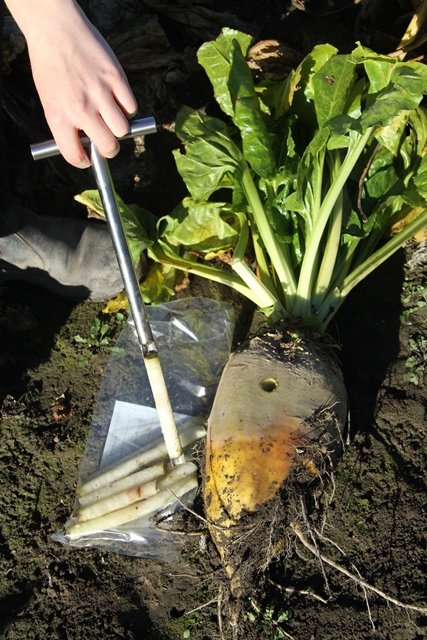Latest fodder beet trials reflect new industry findings
Barenbrug has conducted nearly a dozen fodder beet agronomy trials in recent years, half of them in Canterbury, but that doesn’t mean all the research on this increasingly important crop is done and dusted.
Far from it, says central South Island agronomist Kris Bailey: “We have gathered a lot of data on our own varieties. But we don’t just stop testing them now we have what we need, because new cultivars keep coming out and we have to make sure ours still stack up in terms of performance.”
New methods of sampling and industry research findings on fodder beet production in New Zealand conditions also mean Barenbrug has been able to refine its trial programme.
One good example is the introduction of rapid core sampling this year, following a research paper on crop measurement techniques and yield estimates at the 2016 NZ Grassland Association conference.
Kris says core sampling is much faster than the old system, allowing him and the other agronomists to sample 20 bulbs in the time it would have previously taken them to fine-dice 2 bulbs by hand. It’s also more representative.
“A core sample gives you the whole gradient of the bulb, which is important because there’s more variation in DM yield between bulbs of the same cultivar, and between different parts of the bulb, than originally thought.”
Another area of focus – particularly with Robbos fodder beet – is leaf keeping ability. Agronomists visually evaluate this on a score of 1-9 for every cultivar, Kris says, and again variation is high.
“We start seeing real differences as early as March. Some have virtually no living leaves left by the time they’re grazed, but Robbos leaves tend to stay leafy and green right up to the time they’re eaten.”
Again this is an important distinction: leaves comprise 25% of crop DM yield, and contain much higher levels of protein and fibre than bulbs (19-23% CP and 30% NDF, vs 8-11% CP and 13-15% NDF for bulbs), meaning less reliance on supplement to boost protein and fibre levels in the diet.


